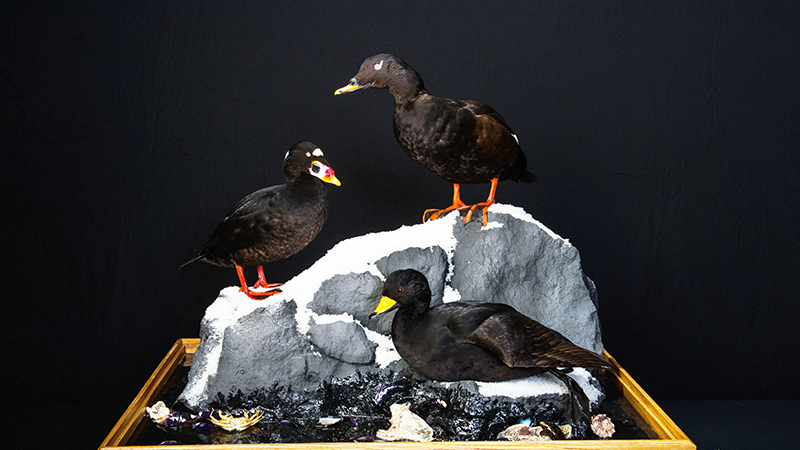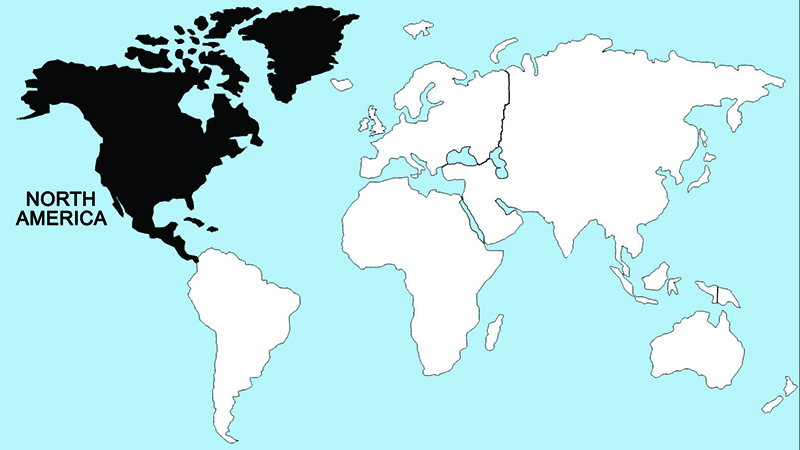White-winged Scoter

The white-winged scoter is easily recognized by its white secondary feathers, which are present in both sexes and all ages. Otherwise, the male is all black, except for its white eyes and a small, somewhat teardropshaped patch of white feathers behind each eye. The male also has some yellow to reddish markings on its bill. The female is mostly dark brown, and in addition to its white wing speculum has small rounded patches of whitish feathers on the ear region and between the eye and the bill. The species has a broad range in both North America and Eurasia (in Britain it is called the velvet scoter) and is perhaps the most abundant worldwide of all scoters. It is the largest and most ponderous of the scoters, but like the others, feeds mostly on mollusks in fairly shallow coastal waters.
Courtship occurs at sea during late winter and spring. By the time they arrive on their breeding grounds, the females are all paired, but nearly a month may elapse before egg-laying begins. The incubation period is 26–29 days, and the young require about 65–75 days to attain fledging, which means that fall migration must begin immediately if the birds are to escape the first winter storms.
Regions Birds Are Found

Collection Location & Year
U.S. - Alaska 2001
Taxonomy
| Order | Anseriformes |
|---|---|
| Family | Anatidae |
| Tribe | Mergini |
| Species | Melanitta |
| Genus | fusca |
Gender
Male
References
- Johnsgard, P. A. 1975a. North American Game Birds of Upland and Shoreline. Lincoln, NE: Univ. of Nebraska Press.
- Johnsgard, P. A. 1978. Ducks, Geese and Swans of the World. Lincoln, NE: Univ. of Nebraska Press.
- Elliot, A., J. del Hoyo, J. Sargatal, and C. Imboden, eds. 1992. Handbook of Birds of the World. Vol. 1 (Ostriches to Ducks). Barcelona, Spain: Lynx Editions.
- Kear, J. 2005. Ducks, Geese and Swans. London, UK: Oxford University Press.